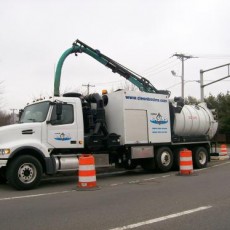What Does Concrete Contractors Do?
Wiki Article
Little Known Facts About Grading Contractors.
Table of ContentsOur Grading Contractors DiariesThe Best Guide To Excavating ContractorsAll about Excavation CompaniesMini Excavator Can Be Fun For EveryoneSome Known Details About General Contractor


Scrapers or Pans dig deep into soil in one area, haul and unload the dirt in an additional spot (mini excavator). It is difficult to match the efficiency of scrapers for cut/fill dirt procedure if the haul range is less after that a mile. Scrapes are normally pulled by a rubber tire wheel tractor and are in some cases pushed with the cut location by an excavator.
There are sometimes that scrapers are not used for site grading and a dump truck is employed: the haul might be to long, the haul might go across roads where scrapers are not permitted, acid rock may be encountered, equipment schedule, and so on. Dispose trucks are in typical usage and possibly call for little discussion.
Lots of vehicles have a top-hinged tailgate that can not unload any rock wider after that the tailgate size. "Rock body" beds, on the various other hand, have no tailgates as well as can discard any kind of dimension rock, although their quantity capacity is decreased. These web links reveal equipment requirements for several common dump trucks. Compaction Devices enhances the density of the dirt and sometimes provides a smooth, rolled surface area.
The Single Strategy To Use For Grading Contractors
From an easy test pit to percussion drilling to core exploration the proprietor has progressively a lot more pricey options that produce significantly far better information concerning the website underground. The Owner on a 100,000 SF structure job might authorize twenty boring places with split spoon soil examples taken until rock is gotten to and also after that core samples of rock.Knowing the kind and also high quality of rock (from the core examples) as well as location of rock (from the soils boring) is a real benefit in jobsite planning. On the other hand, the Owner of a 100,000 SF structure might decide to proceed with no geotechnical testing whatsoever. The choice concerning geotechnical screening is normally made by a Proprietor with no input from the Construction Manager.
An understanding of the approximate place of the rock aids the Construction Supervisor to prepare the series of steps complying with rock excavation. If rock is in one edge of a big structure task, for example, the earth excavation could begin at the contrary end of the building in order to start structure work soonest.
Beginning the foundation job early would be an excellent suggestion if the rock could be removed by ripping. If the rock is extremely hard as well as requires substantial blasting, it may be prudent to hold structure work till the blasting is completed. The Building and construction Supervisor ought to collaborate these kinds of decisions and make use of all the technical date offered.
Not known Incorrect Statements About Excavator
Unclassified excavation states that all rock or various other unforeseen materials (excluding dangerous products) encountered in the sitework will certainly be the responsibility of the Specialist at no modification in agreement cost. An unidentified excavation is easier from a book-keeping viewpoint as well as places the obligation for geotechnical problems onto the Sitework Contractor.It's remarkable what a heavy rain can do to a building and construction project. Prior to the rain, the site may be completely dry, heavy equipment efficiently moving earth, the other professions smoothly performing their job.
In most areas of the globe, the Building Supervisor need to remember an easy truth: IT WILL RAINFALL. Good planning can decrease the damage and interruption of a hefty rainfall to a jobsite. Often the excavation and grading is left to the Sitework Contractor (and also their Foremen is responsible to supervise as well as direct the hefty tools as well as drivers).
The Construction Supervisor have to be constantly aware of what rainfall will do to the task website. It is not uncommon for the Sitework Supervisor to work their heavy equipment for maximum efficiency and wish it does not rainfall. One of the very best methods to prepare for rain is to slope all qualities to drain pipes and to smooth rolled the surface area before a rain.
The Only Guide to Trencher
The Building Manager have to be perceptive enough to guarantee that heavy rain does not quit job on the job longer than necessary. Daily conversations with Sitework Foremen might be called for to attain this goal. At any time excavation is needed listed below the existing groundwater level on a task, the process of dewatering must be taken into consideration.In a truly natural soil, the water takes a trip so gradually through the clay or silt that dewatering is not normally needed for the reasonably brief time of excavation. Dewatering might be needed for a solitary ground excavation or for a whole job website. One of the most usual dewatering approaches are trench drains pipes, deep wells and also well factors.

Ground water seepage can also be lowered by cutoff approaches such as sheet cost to dig out basement stacking. The costs for dewatering can be shocking, including equipment rental, labor and also electrical energy (or fuel). High dewatering expenses have actually faded the earnings margins on far also lots of projects. The numerous variables listed below make the task of approximating dewatering prices extremely tough, and also extremely inexact.
This alternative needs to always be thought about when examining the possibility of dewatering. Undoubtedly the option is just viable if gravity can run the water to reduced ground. Trench drains pipes can be cut with a backhoe and loaded with a rugged, granular material (# 4 rock as an example), however care should be worked out in picking the water electrical outlet type and also location.
try this out
Getting The Excavating Contractors To Work
A siphon, necessarily, utilizes air pressure to bring water from one altitude, up over a barrier, to a lower altitude. The pipelines in a siphon system have to be closed and also some resourcefulness is often needed to totally load the siphon pipe. The siphon pipeline need to be full for the siphon to start.A deep well contains a pump, tube and also a vertical well casing. The pump consumption is at the bottom of the well covering (typically some smashed stone is placed down there as a filter tool) (general contractor). The water is inflated the hose pipe, out of the well covering, as well as to a suitable discharge location.
In a crude sand, for instance, a large location can be pumped to near the pump consumption altitude. A much less absorptive dirt, on the various other hand, lowers the performance of a deep well. Considering that the pump is usually at the bottom of the deep well, there are no height constraints as a result of vacuum lift, and also deep wells can lower the groundwater over 50 feet.
Under of the wellpoint there is a 2 foot long display as well as valve, water jets out of this valve and develops a go to this site hole right into which the wellpoint pipe can be decreased. This opening is frequently made a bigger size (for instance 10 inches) to enable for a coarse sand backfill to assist filter the water (mini excavator).
Report this wiki page